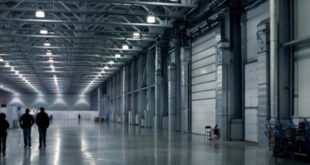But maybe not as bad as some have predicted – perhaps not even a recession – says the UC Riverside study.
The Coronavirus pandemic will deliver a “serious hit” to the national and U.S economies, an its longterm impact is impossible to predict now, according to the UC Riverside School of Business Center for Economic Forecasting.
In a report released March 20, the center revised its 2020 forecast for the local, state and national economies and called the COVID-19 outbreak “monstrously ominous,” and the first real threat to the economic expansion the U.S. has enjoyed for more than 10 years.
“The health crisis created by the Coronavirus is extremely serious and the economic risks are still not fully understood,” the report states. “The next two weeks will be critical in gaining an accurate sense of the true scope of the problem.
“This is unprecedented in nature and by far the worst threat facing the U.S. economic expansion since it began over a decade ago,” said Christopher Thornberg, founding partner of Beacon Economics and director of the forecasting center, in the introduction to the 17-page study. “Will it end the expansion for the year? Whatever the scenario, from best to worst, we are definitely going to see a serious hit in the first half of 2020.
“The U.S. economy is about to hit one big pothole.”
The report predicts that, during the second quarter, unemployment claims will rise, home sales and business formation will drop and the flow of government revenue will slow down. All of that will ripple through the U.S. economy, although no one can predict for how long.
One of those predictions has already come true: first-time claims for unemployment benefits have risen more than 3,000 percent since early March, with 6.6 million U.S. workers filing claims the week of March 28.
U.S. residents have filed 10 million unemployment claims in the last two weeks. That represents about six percent of the U.S. workforce, according to the Labor Department.
As for the rest of the forecasting center’s predictions, it’s too early to say. The last housing numbers were from February, before the full impact of the pandemic began to be felt, as were the U.S. jobs numbers.
Despite its grim tone, the report isn’t entirely negative. It even says a recession isn’t inevitable, much less a depression, as U.S. Treasury Secretary Steve Mnuchin and some others have predicted.
“Too many pundits, forecasters, and politicians are leaping to the conclusion that a recession is inevitable, or even already here, and the financial markets are in almost complete free-fall while panic grips the short term debt markets,” the report states. “Of course, hyperbolic overreactions have become routine on Wall Street.”
Instead, the economy will experience negative growth in the second quarter, but it could recover quickly and post positive numbers in the third quarter. Job growth could again become the norm by the end of the third quarter, but that ultimately depends on how quickly the virus is contained, the report states.
Thornberg, a co-author of the report, made it clear during a telephone interview last week that he doesn’t believe the U.S. economy is going to collapse. The markets, he said, aren’t in nearly as much trouble as they were when the housing bubble burst in 2008 and the country faced its worst financial crisis since the Great Depression.
“Unlike 2008, we know exactly what is causing the problem now and that it will eventually go away,” Thornberg said. “When that happens the economy will come back, because there was nothing wrong with it before this started. That’s the bottom line.”
With stores and restaurants closed indefinitely, more people are shopping online. That could add to the problems of brick-and-mortar retail, which has been losing people to the internet for at least five years.
“Traditional retail could take a big hit,” Thornberg said.
Thornberg was also critical of the Trump Administration’s $2 trillion stimulus program, which Congress approved and the president signed on March 27.
“I think it’s preposterously high,” he said. “Every health mandate they’ve passed so far is designed to keep in the house, where they won’t spend a lot of money. It doesn’t make any sense.”
Economist John Husing, who has been studying economic trends in the Inland Empire since the mid-1960s, originally predicted that 28,150 jobs would be added to the local economy in 2020, which would have been a year-over-year increase of 1.8 percent.
However, on his website last week, Husing revised that forecast to a loss of 31,450 jobs, with a possible rise in unemployment to 5.5 percent.
“There could be a lot of people out of work for a long time,” Husing said. “It’s hard to put a number on it. One problem is there is no precedent for what we’re dealing with, and that makes it hard to predict anything.”
 IE Business Daily Business news for the Inland Empire.
IE Business Daily Business news for the Inland Empire.


